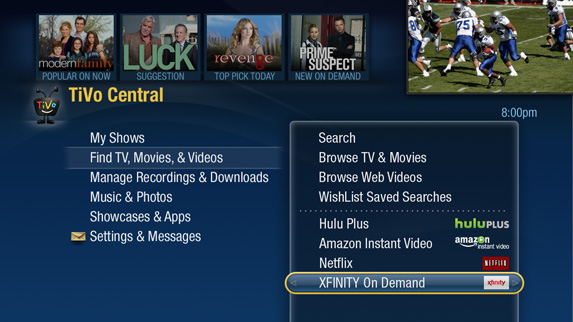Comcast, TiVo Complete VOD Rollout In San Francisco
Comcast and TiVo now offer access to the MSO's video-on-demand library to any cable subscriber in the San Francisco Bay Area using a TiVo Premiere digital video recorder, and the duo plan to expand the feature to additional markets in the coming months, according to a regulatory filing by the DVR company.
TiVo, in an ex parte filing with the FCC, said the companies completed the rollout in San Francisco at the end of April.
TiVo did not disclose how many Comcast subscribers have availed themselves of the option. The company had 1.1 million "TiVo-owned" retail subscribers as of Jan. 31, with 1.2 million through DirecTV, Virgin Media and other operators.
"This deployment demonstrates that some pay TV providers are taking steps to work cooperatively with consumer electronics manufacturers in an effort to deliver exciting new solutions for their mutual customers, and that providing retail devices with the full array of pay TV content can be achieved in ways that do not undermine pay TV operators business models," Matthew Zinn, TiVo's senior vice president of general counsel, said in the filing. "We hope that other pay TV providers follow Comcast's lead to deliver greater device choices to the benefit of consumers."

In May 2011, Comcast terminated its set-top software development agreement with TiVo -- ending more than six years of work trying to offer the TiVo user interface as an option to customers -- while the MSO agreed to open VOD to users of TiVo Premiere DVRs bought at retail.
According to TiVo, its DVRs access Comcast VOD services via QAM, while the authentication process is handled via IP.
Separately, Comcast is under fire from critics including Netflix and public-interest groups over a similar feature it introduced for Microsoft's Xbox 360.
The smarter way to stay on top of the multichannel video marketplace. Sign up below.
As with Comcast's traditional VOD services, video viewed using the Xfinity app for Xbox does not count toward the MSO's 250-Gigabyte monthly usage cap. Netflix and others complain that because Comcast is transmitting the video over the IP portion of its network, the cable operator should apply the same policies that it does to Internet-delivered video to comply with the FCC's network-neutrality rules.
Meanwhile, TiVo's Zinn noted in the FCC filing that the number of CableCard users -- who access cable TV programming using TiVo DVRs or other devices -- has increased over the last nine months, according to the National Cable & Telecommunications Association.
The NCTA said last month that the nine largest U.S. MSOs have approximately 615,000 standalone CableCards in service, which means fewer than 1.2% of cable subscribers are opting to use the technology. That represents a 6% increase from 582,000 CableCards in service in July 2011.
